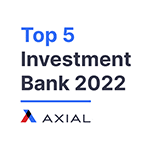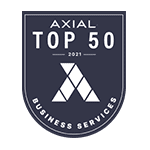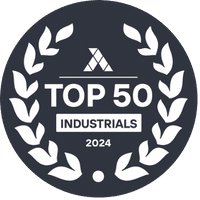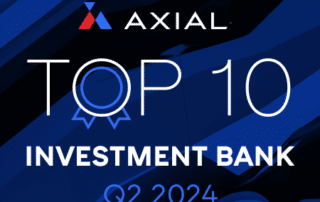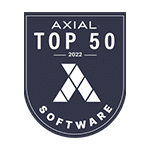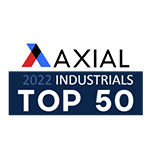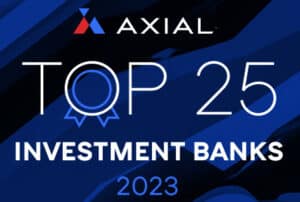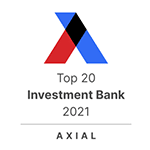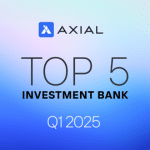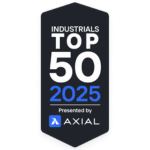
Skyrocketing A&D Production: Capitalizing on the M&A value right in front of you
Production levels are up in the Aerospace & Defense (A&D) sector, fueled by rising defense budgets around the world, and demand from U.S. allies for advanced weapons systems. Deal activity in the sector, muted by rising interest rates and global security concerns, is expected to rebound in the upcoming years. Industry players seek strategic acquisitions to shore up supply chains, and add talent and capacity, strengthening their competitive positioning to win lucrative, long-tailed defense contracts.
In this piece, the first of a series on M&A in A&D, we look at specific aspects of three common business issues that stand out for A&D companies considering a transaction: government contracts; supply chain resilience; and growth opportunities.
Government Contracts
Prototype to Production
Aircraft platforms and weapons systems are but two examples of the extraordinarily complex kinds of long-running programs in the sector, usually led by one of the big prime contractors and supported by dozens of teams of specialist companies. Prior to program award, however, the government often invites multiple teams to create prototypes, which it will then evaluate. This represents significant investment of time and capital from the contractors, who highlight their special qualifications to seek positions on the “favored to win” team(s). Companies must balance their efforts toward the big win (a long-running production contract, see Growth Opportunities below) with other pursuits, maintaining some diversity in their revenue. Acquirers review the quality of a target’s sales pipeline and evaluate if a possible transaction could jeopardize those wins due to conflicts of interest or teaming agreement violations.
National Security
It is also very important to assess any national security considerations involved with government contracts that could impact the transaction. Many A&D companies produce goods or provide services that fall under ITAR1, which means they must be registered with the State Department and follow the guidelines. Foreign buyers will often require CFIUS2 and/or FOCI3 approval by the U.S. government. Some foreign buyers may set up proxy companies to make the acquisition and stay within the rules. All of these issues can add time and complexity to the closing process, and due diligence for both buyers and sellers around potential national security infractions or lack of compliance is important. With access to certain defense technology being very limited, many buyers outside the U.S. will be prohibited from owning A&D companies, including buyers from Russia, China, Iran, and several other non-NATO countries.
Transaction structure is also affected by government contracts. Asset deals, generally more favorable to sellers from tax and liability perspectives, are complicated by the need to novate the contracts, which usually requires government approval and can add months to the timeline. The alternative is a stock purchase, which eliminates the novation issue – but which may have other implications for both buyer and seller.
Supply Chains
Resilience
A&D supply chains can be complex and highly regulated, reducing the workaround options when issues arise. Qualification of new sources of components and parts is a long process, which protects suppliers from competition but also stresses systems reliant on single or limited sources. A single hold up can seriously impact the revenue and profitability of all the players in the production chain.
The Javelin missile production slowdown (2020 – 2023), created by a chip shortage, was a striking example of supply chain failure. There are at least 250 chips in each missile’s launching system, and the shortage resulted in the depletion of the U.S. arsenal as Department of Defense contractors struggled to produce enough of these weapons to match demand. Intel Corporation was able to increase its chip production output for the missiles, and employ new tooling and testing equipment, improving efficiency of the production line and delivery performance from its supply chain. The passing of the CHIPS and Science Act4 in 2022 has and will continue to stimulate chip production investment in the U.S., which is sure to change the landscape of critical defense technology for years to come.
A&D companies proactively adopting risk mitigation techniques for their supply chains reassure buyers that they can adapt and that projected results are credible. Actions include balancing low-cost raw materials with second sources; making best value supplier selections; confirming suppliers are financially healthy and not on restricted lists; and sourcing parts locally. Overall, sellers need a clear supply chain strategy to maximize transaction value and increase the likelihood of deal closing.
Growth Opportunities
Sustainable & Long-Term
Successful (and therefore valuable) A&D companies play the long game – seeking and winning spots on teams supporting programs that could last decades, leveraging their specialized skill sets or technologies to maintain strong margins and protect their position. Prime contractors value consistent, trusted, highly qualified suppliers and in turn the suppliers benefit from the contract length and security of revenue visibility. Providing key technologies and unique parts only enhance a company’s worth, and ensure contract renewals – another important value driver.
A&D companies with a strong track record and specific qualifications are attractive additions to new teams pursuing growth areas like cybersecurity emerging technologies, as well as those providing support for legacy weapons platforms and MRO for aging fleets. Companies with capacity within their operations for growth that doesn’t require major capital investments is another attractive quality. This means making sure that companies have both the space and equipment to expand their operations, and that buyers won’t have to invest millions of dollars in building new buildings and purchasing new manufacturing equipment, which can depress valuations or acquisition interest.
This article highlighted factors that can impact M&A deals in the A&D industry. In the next article, we’ll talk about the importance of understanding and maximizing your business’s enterprise value, particularly when preparing to sell. We will also explore ways to enhance a company’s enterprise value.


